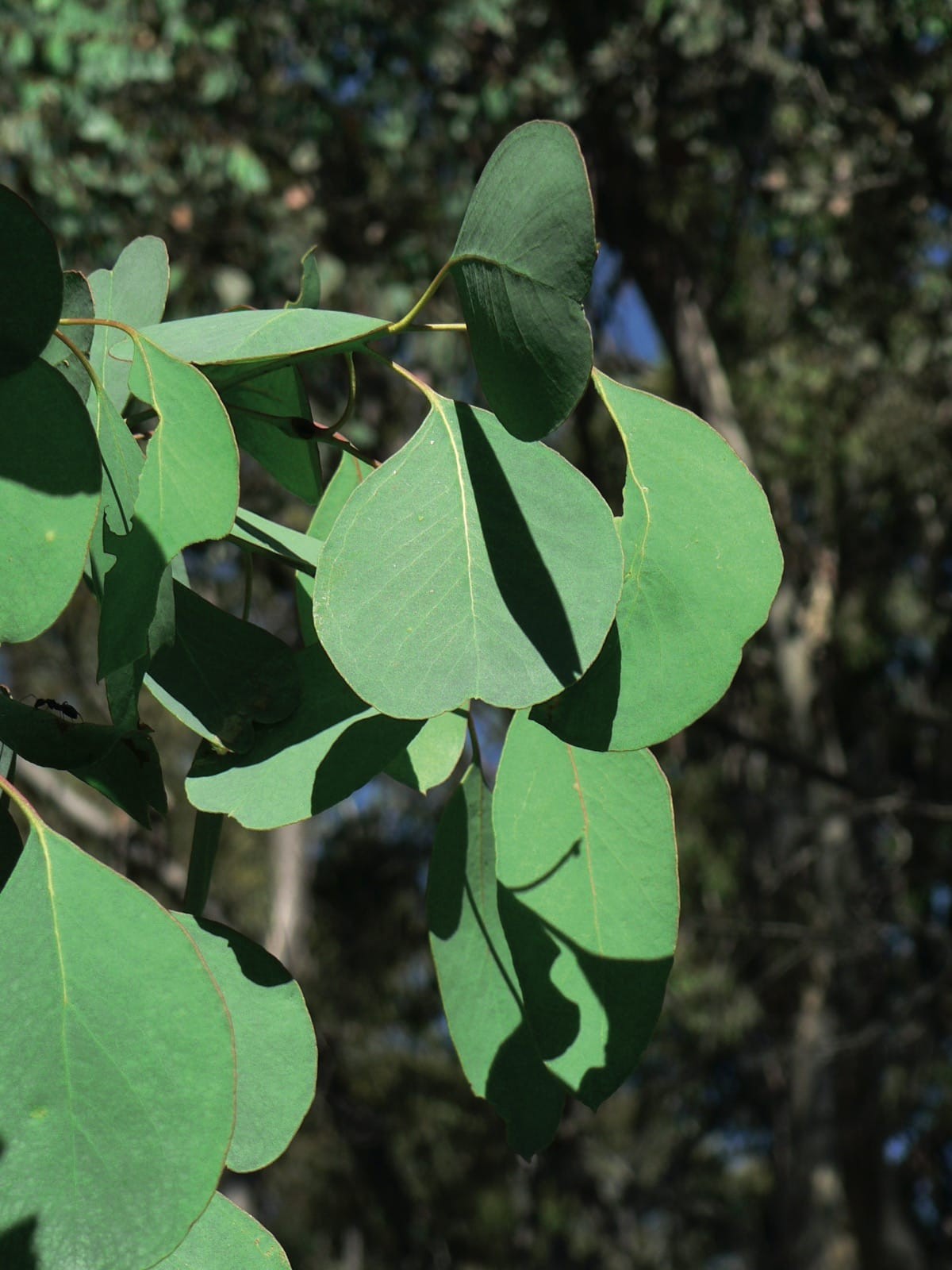Eucalyptus camphora
Credits
Article from New Trees by John Grimshaw & Ross Bayton
Recommended citation
'Eucalyptus camphora' from the website Trees and Shrubs Online (treesandshrubsonline.
Genus
Common Names
- Broad-leaved Sallee
- Mountain Swamp Gum
Other taxa in genus
- Eucalyptus acaciiformis
- Eucalyptus albida
- Eucalyptus amygdalina
- Eucalyptus archeri
- Eucalyptus blakelyi
- Eucalyptus bridgesiana
- Eucalyptus brookeriana
- Eucalyptus camaldulensis
- Eucalyptus chapmaniana
- Eucalyptus cinerea
- Eucalyptus coccifera
- Eucalyptus cordata
- Eucalyptus crenulata
- Eucalyptus cypellocarpa
- Eucalyptus dalrympleana
- Eucalyptus delegatensis
- Eucalyptus elliptica
- Eucalyptus fastigata
- Eucalyptus fraxinoides
- Eucalyptus globulus
- Eucalyptus gregsoniana
- Eucalyptus gunnii
- Eucalyptus johnstonii
- Eucalyptus kybeanensis
- Eucalyptus lacrimans
- Eucalyptus laophila
- Eucalyptus leucoxylon
- Eucalyptus macarthurii
- Eucalyptus macrorhyncha
- Eucalyptus mannifera
- Eucalyptus melliodora
- Eucalyptus mitchelliana
- Eucalyptus moorei
- Eucalyptus morrisbyi
- Eucalyptus neglecta
- Eucalyptus nicholii
- Eucalyptus nitens
- Eucalyptus nova-anglica
- Eucalyptus obliqua
- Eucalyptus oreades
- Eucalyptus ovata
- Eucalyptus parvula
- Eucalyptus pauciflora
- Eucalyptus praecox
- Eucalyptus radiata
- Eucalyptus regnans
- Eucalyptus remota
- Eucalyptus risdonii
- Eucalyptus rodwayi
- Eucalyptus rubida
- Eucalyptus saligna
- Eucalyptus sideroxylon
- Eucalyptus stellulata
- Eucalyptus subcrenulata
- Eucalyptus tenuiramis
- Eucalyptus urnigera
- Eucalyptus viminalis
Tree to 22 m. Bark grey or greyish brown to almost black and smooth throughout. Branchlets reddish orange or yellow. Juvenile leaves sessile, ovate, emarginate, green. Adult leaves shiny green, 6–13 × 3.8–5 cm, ovate to broadly lanceolate, lateral veins distinct, margins entire, apex rounded or sometimes emarginate; petiole terete, 2.5–4 cm long. Inflorescences axillary and solitary; umbellasters with seven flowers. Flower buds spindle-shaped; hypanthium 0.3–0.5 cm wide; stamens white or cream. Capsule conical or cup-shaped, 0.4–0.6 cm diameter; valves three to four, level or slightly exserted. Chippendale 1988. Distribution AUSTRALIA: New South Wales, Queensland, Victoria. Habitat Montane forest, particularly in marshland. USDA Hardiness Zone 8. Conservation status Not evaluated. Illustration NT336. Cross-references B135, S230.
A key to the three subspecies of Eucalyptus camphora, modified from Johnson & Hill (1990b), is provided below.
| 1a. | Petioles > 2 cm long | 2 |
| 1b. | Petioles < 2 cm long; Australia (New South Wales: Central Tablelands) | subsp. camphora |
| 2a. | Largest adult leaves < 2.5 cm wide; Australia (northeastern New South Wales: Northern Tablelands; southeastern Queensland: Racecourse Creek) | subsp. relicta L.A.S. Johnson & K.D. Hill |
| 2b. | Largest adult leaves > 2.5 cm wide; Australia (southeastern New South Wales, northeastern Victoria) | subsp. humeana L.A.S. Johnson & K.D. Hill |
Eucalyptus camphora could be seen as a high-altitude form of E. ovata, which is less hardy. Both grow in wet ground in their native habitat. Eucalyptus camphora will also tolerate boggy and even flooded conditions in cultivation in southern England, and does not rock in the ground. It is, however, somewhat less hardy when grown in wet conditions than on drier sites (which it also tolerates well). Bean (1981a) recorded that it had been ‘recently introduced’ by R.C. Barnard, and predicted that it should be very hardy. This seems to be the case, although provenance is, as always, important. Trees from the population near Wee Jasper, New South Wales are particularly tough, and have withstood –16.5 ºC in Oregon and resprouted from much lower temperatures in Cincinnati (S. Hogan, pers. comm. 2007).
Eucalyptus camphora is an attractive species, with rounded lime-green leaves when young, often with a slight sinus that gives them a camel’s-foot appearance. Adult leaves are more elongated, and a rich dark green (although material from higher altitudes will often show some glaucescence). The leaves flush reddish, and also turn a good red as they die. It is a rapid grower, some plants in Oxfordshire being almost 9 m after only six years (G. Cooper, pers. comm. 2007), and others in Oregon reaching 13 m in 10 years (S. Hogan, pers. comm. 2007). Despite all these promising signs, however, no older trees are known in the British Isles at present, the current TROBI-recognised champion being 9 m in 2004 at Fox Rosehill Garden, Cornwall. Larger specimens (up to 18 m in Devon) have been recorded in the past.


